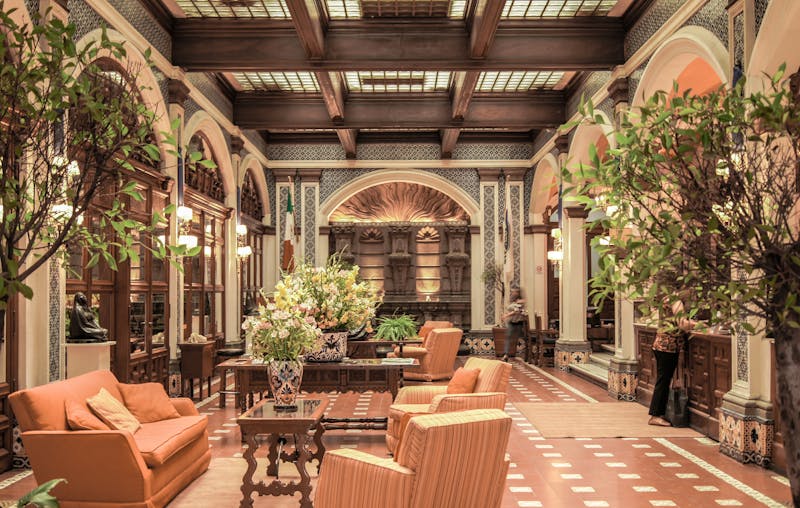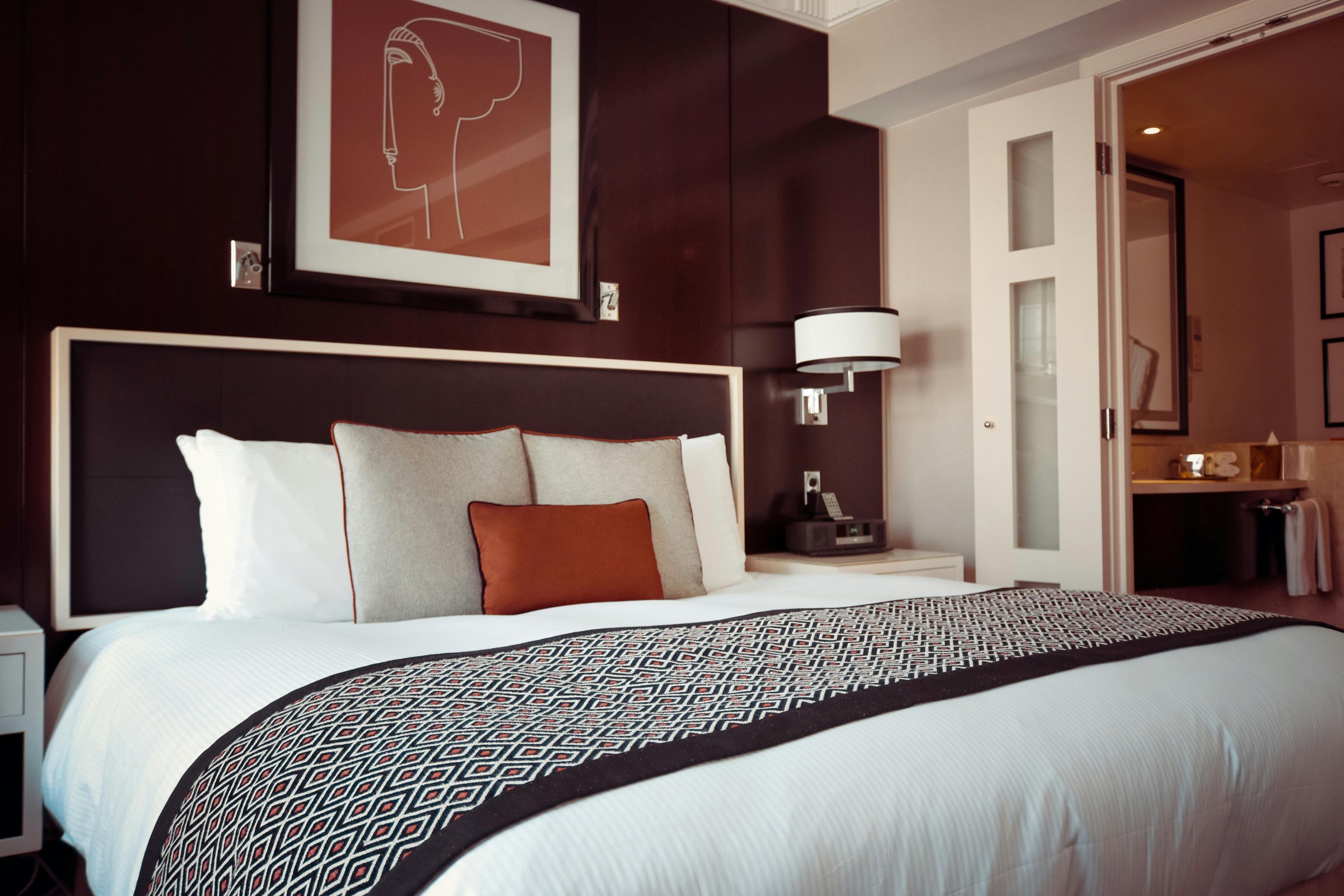How to market a boutique hotel branding Guide.

How Thoughtful Design Can Strengthen Your Brand and Build Lasting Connections with Customers
James’s story mirrors that of many businesses with deep roots. While a strong history and reputation are valuable, it’s the of his brand that will set him apart in a crowded market. Brand design is not just about having a good-looking logo or website—it’s about how your business communicates its values, builds trust, and forms lasting connections with customers. Whether you’re running a family-owned hotel like James or a local shop that’s been around for years, design can make all the difference in how your brand is perceived and how it resonates with your audience.
In this article, we’ll explore how design impacts consumer behavior and how businesses, like James’s hotel, can use it to forge stronger, more meaningful relationships with their customers.
1. First Impressions Matter
In today’s world, people form opinions quickly. In fact, studies show that 94% of first impressions are based on design alone. For James, that means the way his hotel looks online—whether it’s the website, social media profiles, or booking pages—can make or break someone’s decision to stay.
Imagine you’re planning a vacation. You come across two hotels: one with a cluttered, outdated website and another with a sleek, easy-to-navigate site that showcases beautiful images of its rooms, services, and local attractions. Which one are you more likely to book?
The same logic applies to in-person experiences. James knows that the first impression guests get when they walk into his lobby is just as important. A welcoming, well-designed space tells guests they’re in good hands. For example, Apple’s minimalist design, both online and in-store, is a perfect example of how a clean, professional look builds trust and communicates quality.
Actionable Tip:
Make sure your brand’s design is clean, professional, and easy to navigate, both online and in-person. Your logo, colors, and overall layout should reflect your brand’s values and message. First impressions matter—design can either draw customers in or push them away.
2. Creating an Emotional Connection
Humans are emotional by nature, and design is a powerful tool for tapping into those feelings. The colors, fonts, and imagery you choose can create emotional connections that go beyond just what you offer.
For James, this meant more than just giving his hotel a “facelift.” He wanted to evoke feelings of warmth, comfort, and nostalgia, tying his branding back to the family history of his hotel. By using soft, inviting colors and vintage elements that hinted at the hotel’s heritage, James was able to tell a story through his design that resonated with guests.
Consider how Coca-Cola uses the color red to inspire excitement, happiness, and energy. Their ads, especially around the holidays, connect consumers to feelings of joy and togetherness. In a similar way, James’s design choices invite guests to feel part of something special, to share in the history and experience his family has cultivated for decades.
Actionable Tip:
Use design elements that reflect the emotions you want your customers to feel. Whether it’s trust, excitement, or nostalgia, make sure your brand’s colors, fonts, and imagery align with the emotions you’re trying to evoke. The goal is to build an emotional connection that makes customers feel good about choosing your brand.
3. Building Trust with Consistency
One of the keys to building trust in any brand is consistency. Customers need to feel that they know what to expect from your business, and a consistent design across all platforms helps build that trust.
For James, maintaining consistency across his website, social media, and physical hotel was essential. He ensured that his logo, colors, and tone were the same on all his marketing materials, from his room brochures to his hotel’s Instagram page. When guests saw his branding online, they would recognize the same style and atmosphere when they arrived at the hotel, building a sense of familiarity and comfort.
Starbucks is a great example of this. Whether you’re visiting a Starbucks in New York or Tokyo, the familiar green logo, the store layout, and even the design of the cup in your hand all signal consistency and reliability. This consistency creates trust, making customers feel confident in the experience they’ll receive.
Actionable Tip:
Make sure your brand design is consistent across all touchpoints—your website, social media, physical locations, and products. A consistent look and feel build recognition and trust over time.
4. Standing Out and Being Memorable
A well-designed brand sticks in people’s minds. Whether it’s through a bold logo, an eye-catching color palette, or unique packaging, design plays a key role in making your brand memorable.
In James’s case, he decided to use unique design elements inspired by his hotel’s history. He updated the hotel’s signage and interior design to reflect the classic charm of the building, but with modern touches. Guests now often comment on how the hotel’s design feels both timeless and fresh, which makes it stand out from competitors.
Nike is a perfect example of a brand that stands out. The iconic swoosh logo is simple yet instantly recognizable, and it’s synonymous with athletic achievement. Over time, customers have come to associate Nike products with success, ambition, and quality.
Actionable Tip:
Create unique design elements for your brand, whether it’s through a memorable logo, bold color scheme, or packaging design. The goal is to make your brand stand out so it stays top-of-mind for customers when they’re ready to make a purchase.
5. Positive Feedback and Social Proof
What customers say about your brand often holds more weight than what you say about it. Positive reviews and word-of-mouth recommendations significantly influence buying decisions, and design can play a role here too. A well-designed brand creates a positive experience, making customers more likely to share it with others.
For James, having a user-friendly website and beautifully designed rooms helped generate glowing online reviews. Guests felt good about their stay and shared their positive experiences on travel platforms and social media. This led to more bookings, as new customers trusted the feedback from previous guests.
Warby Parker, for instance, uses a clean, modern website design that makes the process of buying glasses easy and enjoyable. Their well-thought-out design, combined with excellent customer service, leads to positive reviews, which helps build trust and attract more buyers.
Actionable Tip:
Encourage customer feedback and reviews, and make sure your brand’s design reflects the quality and experience you want customers to talk about. A well-designed brand enhances customer satisfaction and leads to more positive word-of-mouth.
6. Helping Customers Make Decisions
At the end of the day, design helps customers make decisions. When faced with two similar products or services, consumers are more likely to choose the one that looks more professional, trustworthy, or appealing.
Luxury brands like Chanel or Louis Vuitton use sleek, elegant designs to signal exclusivity and high-quality craftsmanship. Their logos, packaging, and store designs all reinforce the idea that their products are worth the investment.
For James, presenting a well-designed hotel not only made his guests feel comfortable but also helped them feel that they were getting value for their money. His thoughtfully designed branding and website made the decision to book with him feel like the right choice.
Actionable Tip:
Use design to influence buying decisions. Ensure your brand looks professional and trustworthy, so customers feel confident in choosing your business over competitors.
Conclusion: Design is More Than Just Looks
Good design isn’t just about making things look pretty—it’s about how your brand connects with your customers. From creating strong first impressions and building emotional connections to fostering trust and influencing buying decisions, design is a critical part of how people perceive and interact with your business.
Just like James’s family-run hotel, your business’s brand design should reflect your values, history, and the experience you want to create for your customers. In the end, a brand is what people say about it, but through thoughtful, consistent design, you can guide that conversation and set your brand up for long-term success.
_____________________________________________________________________________________________________________

Bonus: Branding Guide – How to Market a Boutique Hotel
If you own or manage a boutique hotel, like James, you already know that your brand needs to stand out in a competitive marketplace. Here’s a quick guide to help you market your boutique hotel effectively through strong, cohesive branding.
1. Define Your Unique Story
Every boutique hotel has a unique story to tell. Maybe it’s the building’s rich history, the local culture, or your personal journey. Use your story to create a brand narrative that connects emotionally with your guests. James, for instance, highlighted the multi-generational history of his family-owned hotel, giving his brand an authentic and heartfelt identity.
- Actionable Tip: Develop a brand story that reflects the unique character of your hotel. Make sure this narrative is consistently communicated across your website, social media, and in-person guest experiences.
2. Create a Memorable Visual Identity
Your logo, color palette, and typography should reflect the personality of your hotel. Are you aiming for a modern, luxury feel? Or perhaps a charming, vintage aesthetic? Align your visual identity with the experience you want your guests to have.
- Actionable Tip: Hire a professional designer to create a unique, recognizable logo and a cohesive visual style for your hotel. Use these design elements across all touchpoints—website, brochures, business cards, and signage.
3. Leverage High-Quality Imagery
For boutique hotels, high-quality images are crucial. People often make booking decisions based on photos, so invest in professional photography that showcases your hotel’s rooms, common areas, and unique features. Make sure your photos highlight what sets your hotel apart—whether it's the cozy decor, breathtaking views, or historical charm.
- Actionable Tip: Regularly update your website and social media platforms with fresh, high-quality images. Use these visuals in your marketing campaigns to show potential guests what makes your hotel special.
4. Build a Consistent Online Presence
Ensure that your branding is consistent across all online platforms—your website, booking platforms, social media profiles, and review sites. Potential guests should have a seamless experience when interacting with your brand, no matter where they find you.
- Actionable Tip: Keep your website design simple and user-friendly, and maintain the same logo, colors, and fonts across all your online platforms. Make sure your brand voice is consistent in blog posts, social media updates, and guest interactions.
5. Leverage Social Proof
Guest reviews and testimonials are incredibly powerful in the hospitality industry. Encourage happy guests to leave positive reviews on platforms like TripAdvisor, Google, and Yelp. Highlight these reviews on your website and social media pages to build trust with potential guests.
- Actionable Tip: Create a social media strategy where you regularly share guest testimonials and success stories. Also, consider setting up a referral or loyalty program to encourage repeat bookings and word-of-mouth recommendations.
6. Highlight Local Experiences
Boutique hotels often offer a more personalized experience than large chains, so capitalize on your local knowledge. Partner with nearby restaurants, attractions, and event organizers to create packages or offer insider tips on local hotspots. This makes your hotel part of a unique experience, not just a place to stay.
- Actionable Tip: Offer curated local guides, partner with local businesses, and highlight unique experiences through your website and social media channels. This will enhance your brand’s value and appeal to guests looking for something beyond just a room.
7. Create a Personalized Guest Experience
Guests who choose boutique hotels often expect a more personalized experience. Whether it's greeting guests by name or offering custom amenities, these small touches make a big difference in how people perceive your brand.
- Actionable Tip: Train your staff to deliver exceptional, personalized service. You can also use guest data to offer personalized offers, such as birthday discounts or custom room setups based on past preferences.
8. Invest in Content Marketing
Content marketing is a powerful way to showcase your hotel’s brand and drive more bookings. Start a blog or post regularly on social media with engaging content—local travel tips, behind-the-scenes stories, or special events happening at your hotel.
- Actionable Tip: Use blog posts, video tours, and guest interviews to promote your hotel. Focus on creating content that is useful and interesting for your target audience, while subtly reinforcing your hotel’s unique identity and charm.
By following these steps, you can market your boutique hotel effectively through thoughtful branding and design, just like James did. Whether your hotel has a rich family history or offers a one-of-a-kind experience, aligning your brand with your core values will help you attract the right guests and create lasting connections.
Make Your Business Online By The Best No—Code & No—Plugin Solution In The Market.
30 Day Money-Back Guarantee
Say goodbye to your low online sales rate!

